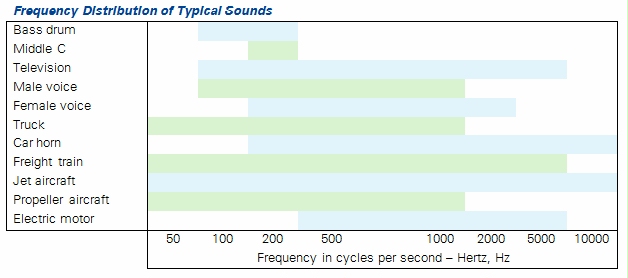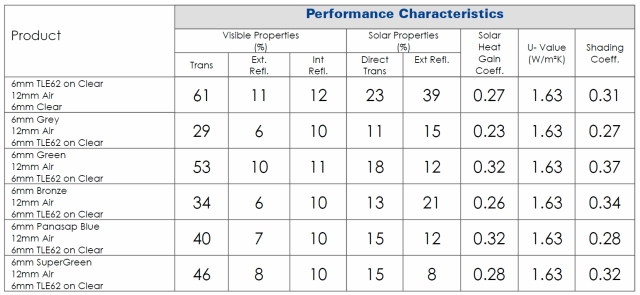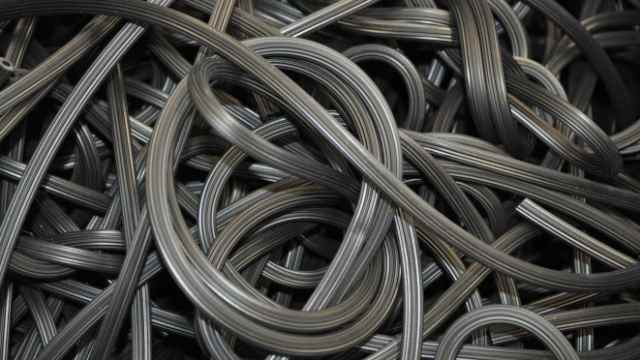 Insulating Glass Units (IGUs) or double glazing, have been a popular solution to control noise, but they aren’t the only, or even the best solution in many cases. The aim of this article is to explain how acoustic problems are identified, assessed and provide solutions to properly address them.
Insulating Glass Units (IGUs) or double glazing, have been a popular solution to control noise, but they aren’t the only, or even the best solution in many cases. The aim of this article is to explain how acoustic problems are identified, assessed and provide solutions to properly address them.
Acoustics
The acoustic performance of façades is becoming more important in building design, and not surprisingly is included as part of the Green Star rating process. Although it is a small part, it’s raising the profile of sound reduction and the need to find better solutions to the increasingly worsening noise problems in today’s society.
To better understand how to mitigate sound, it is beneficial to have an awareness of a few key ideas; how sound is transferred, the way different noises are measured, know about the principles to minimise the variety of sources and coordinating appropriate solutions. Prior knowledge makes finding a solution a lot quicker and easier when you are consulting a professional. Using advice to compare test results, it is imperative to know the difference between glass only and window system results if you want sound acoustic solutions.
Determining sound factors
Noise sources in the vicinity of a project need to be identified to best determine the most efficient glazing solutions. Look for risk sources, some examples of which are below;
- Traffic noise from vehicles – cars and/or trucks
- Trains
- Planes and flight paths
- Trams
- Boats
- Entertainment venues
- Industry – a warehouse, factory plant, a truck depot up the road
For each source, be aware of the proximity and direction it will be coming from. Future changes that will affect sound transfer must also be considered – empty or older blocks that will be used for building development, planned roads and motorways to be constructed, or a feature that may be removed to expose the project to heightened noise distribution. This information will be assessed by an acoustic engineer or glazing contractor looking at the requirements of the project.
The two main properties that contribute to disturbance from noise are the frequency and intensity level at various frequencies, or volume. Both influence the selection of appropriate glazing systems for a project.
Frequency
Sound travels as sound waves (variations in pressure) that have different frequencies. When the sound wave hits an object, this will be absorbed, transferred or reflected dependant on the properties of the object and the frequency of the sound. Below is a table that describes the frequencies associated with different noises;

Volume
The inherent volume or loudness of noise is measured in decibels (dB). Following is a table that gives you an idea of how loud different noises are;

Acoustic fact:
The human ear cannot distinguish a change in noise level of 3dB or less.
Different types of glass will assist deadening the various frequency and sound levels. To decide what the best solutions are, the window systems need to be comparable.
Measuring how much a glazing system suppresses noise
The current standard unit that is used to nominate the amount of acoustic insulation achievable is the Rw. An Rw rating is applied to many products to compare its capability to reduce sound against similar products. However, the nature of glazing systems means that frequency plays a large part in the transference of sound. So correction factors are applied to the Rw and expressed as Rw(C, Ctr).
Using Rw Data results:
When looking at results, ensure you understand what the Rw rating applies to. Glass only data will give you just that – a figure for the glass. It will not be comparable with a whole of system framing. Glass only data has a higher figure, and misrepresents the effectiveness of the desired glazing solution.
Rw
The Rw, or weighted sound reduction index, is a material or system’s ability to reduce sound transferring through to the other side, of a window or wall. As a rough guide, an increase of 1Rw reduces the sound perceived on the other side by about 1dB.
Rw(C, Ctr)
The correction factor for the Rw takes frequency into account. Medium to high frequency noise like conversation, and faster traffic (travelling more than 80kmh) are nominated as the C number. Low to medium frequency sound like urban traffic and planes flying overhead are the Ctr figure.
If a project has a requirement of Rw = 32(-1,-4), then the Rw = 32, the Rw+C = 31 and the Rw+Ctr = 28. The noise frequency distribution determines the correction factor figure to be used. If the predominant noise source affecting a project is traffic noise, being a low frequency problem, the Rw+Ctr figure is used. In this case, the figure to achieve is 28. If a window system is rated at Rw30(-2,-2), the Rw+Ctr = 28, therefore achieving the above requirement. The Rw number should always be used with correction factors.
Testing the Acoustic Performance of Glazing Systems
Testing is done by accredited organisations in an acoustic laboratory. The testing space consists of two rooms of known acoustic properties separated by a wall with a high sound insulation. The rooms are constructed of thick block work with the entire laboratory sitting on airbags to isolate it from ground vibration. An opening is made in the wall for the glazing system. One of the rooms is set up as a source room, and one is the receiving room. The difference in noise level measured between the rooms is used to calculate Rw, C and Ctr figures that are attributed to the system tested.
Acoustic Solutions
There are several acoustic principles that are applied to the design of glazing systems to obtain the best performance to guide you in choosing the optimal glazing products.
Glazing design
Keeping sound out is like keeping water out – any gaps provide a path by which the acoustic efficiency of a system is reduced. Even the smallest crevice or notch out of a system makes a difference. Glazing systems can be riddled with gaps – good systems minimise these as much as possible. Testing is the only way to know how any system will perform.
Product selection
Restricting sound penetration is only as good as the barrier’s weakest point. Opening or operable parts of a façade are the hardest places to control sound, but improvements in technology are minimising the issue. With changes in door design to allow for access according to AS 1428, it is good to be aware these points are made weaker, acoustically. With glazing developments, there are solutions to help minimise this issue.
Window systems with a positive closing force are more effective at blocking out sound. Awning windows and hinged doors generally perform better than sliding windows and doors.
Acoustic seals can be used to improve glazing performance and achieve a better Rw rating. The only way this can be accurately assessed and used for compliance, is if the glazing system is tested with the acoustic seals.
An air gap between the glass panels in a glazing system can provide a degree of sound reduction dependant on the size of the air gap. Typical IGUs with an 8, 10 or 12mm air gap, the improvement is marginal. Larger double glazed air gaps are much more effective, with 50mm being the “sweet spot” with only marginal improvement beyond this. These large air gap systems are generally the best performing of any glazing system. Jockey sash systems can also be used to create large air gaps but have size restrictions and may cause internal condensation issues.
Laminated glass can provide equivalent or better performance than a standard air gap IGU. Typically the thicker the laminate, the better the acoustic performance. Specifically designed acoustic interlayers are now available that provide an increase in performance in standard interlayers
Looking for assistance with acoustic design
Window fabricators can help you understand the acoustic performance that their products provide. If you are aware of the nature of noise pollution in the vicinity of your project, then it’s a matter of matching the correct products to minimise this problem. Look for new technology becoming available to better deal with the increasing noise issues in today’s society.
When using window acoustic data, ensure you are discussing whole of window system data. There is a lot of glass only data available, but it’s the frame that is typically the weakest acoustic point of a glazing system. The glass only data will not give you a proper representation of noise control.
5 Points to Remember
- Understanding Rw(C,Ctr).
- Gaps in Systems = sound transfer. Minimise these weak points, especially in operable glazing.
- Larger air gaps in between glazing layers helps acoustically.
- Familiarity with latest technology in sound reducing products like acoustic seals and interlayers.
- Test results need to be comparable. Look at whole glazing systems, not glass only test results.
Helpful Links
For further information on the subject, please refer to the suggested following resources:





 Ongoing development of a historical site located at Newstead (Brisbane), sees it transforming in stages to a new mixed use precinct. The name derives from the sites original use – the gasworks, and part of the project is to protect the heritage listed gasometer located prominently amid the gasworks buildings.
Ongoing development of a historical site located at Newstead (Brisbane), sees it transforming in stages to a new mixed use precinct. The name derives from the sites original use – the gasworks, and part of the project is to protect the heritage listed gasometer located prominently amid the gasworks buildings.












 Insulating Glass Units (IGUs) or double glazing, have been a popular solution to control noise, but they aren’t the only, or even the best solution in many cases. The aim of this article is to explain how acoustic problems are identified, assessed and provide solutions to properly address them.
Insulating Glass Units (IGUs) or double glazing, have been a popular solution to control noise, but they aren’t the only, or even the best solution in many cases. The aim of this article is to explain how acoustic problems are identified, assessed and provide solutions to properly address them.

 The G.James Glass and Aluminium Plastics department has been operating since 1995, and started out manufacturing just 2 products for in house use. Type and quantity of manufacturing has been growing steadily ever since. Commercial sale of products initiated 5 years ago, and now supports several industries.
The G.James Glass and Aluminium Plastics department has been operating since 1995, and started out manufacturing just 2 products for in house use. Type and quantity of manufacturing has been growing steadily ever since. Commercial sale of products initiated 5 years ago, and now supports several industries.








